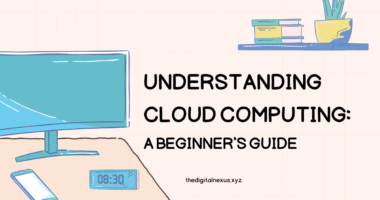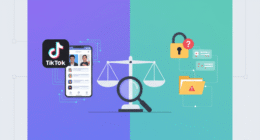Do you ever feel like you are drowning in a sea of to-do lists, scattered notes, and a dozen different apps that were all supposed to make you more productive? If so, you are not alone. The problem is rarely the apps themselves. The real issue is the lack of a cohesive system that ties them all together. A truly effective personal productivity system is not about finding the one perfect tool. Instead, it is about creating a reliable framework for managing your life’s information and commitments. This ultimate guide, therefore, will walk you through the essential components of building a system that is tailored to you, one that will finally bring clarity and control to your busy life.
The 5 Foundational Principles of Every Great System
Before we dive into the specific components, it is crucial to understand the principles that make any personal productivity system work. Internalizing these ideas is the first step toward lasting change.
- Externalize Everything: Your brain is for having ideas, not for holding them. A core principle is to get every task, idea, and reminder out of your head and into a trusted external system.
- Single Source of Truth: Avoid scattering information. For each type of information (e.g., tasks, notes), there should be one designated place for it to live.
- Action-Oriented: Your system should be biased towards action. Every item should be clear, and its next step should be obvious.
- Context is King: The best systems allow you to see the right information at the right time. For example, you should be able to see your work tasks at work and your grocery list at the store.
- Consistent Review: A system is not static. You must regularly review and maintain it to keep it functional and trustworthy.
Component 1: The Capture Habit (Your Digital Inbox)
The first and most important component of your personal productivity system is a reliable way to capture everything. This is your “inbox” for life. The goal is to make the process of getting something out of your head as frictionless as possible.
Your capture tool does not need to be fancy. It can be a simple notes app on your phone, a voice recorder, or even a physical pocket notebook. The key is that it must be always with you and easy to use. Whenever a new idea, task, or piece of information comes to you, your immediate reflex should be to capture it in this inbox. You will process it later; for now, the only goal is to get it out of your mind.
Component 2: The Task Manager (Your Action Hub)
Once you have captured your thoughts, you need a place to manage the things you actually have to *do*. This is your task manager, the action hub of your personal productivity system. This tool is where you will turn vague ideas into concrete, actionable steps.
A good task manager should allow you to organize tasks by project, set due dates, and assign priorities. This is where you will break down large projects into smaller, manageable steps. For instance, a task like “plan vacation” is not a task; it is a project. In your task manager, you would break it down into smaller actions like “research flights,” “book hotel,” and “request time off.” Having all of your logins for these tools secured in a good password manager is a crucial first step.
Component 3: The Knowledge Base (Your “Second Brain”)
Not everything you capture is a task. A lot of it is reference material: articles you want to read, project notes, interesting quotes, or meeting minutes. This information belongs in your knowledge base, which acts as your “second brain.”
This is where tools like Notion and Evernote shine. As we explored in our Notion vs. Evernote showdown, these platforms are designed for storing and organizing information. Your knowledge base is the library of your personal productivity system. It is the place you go to find information when you need it, freeing up your task manager to be focused only on actions.
Component 4: The Calendar (Your Time Fortress)
Your calendar is for things that have to happen at a specific time and date. This component of your personal productivity system is not just for appointments and meetings. It is your fortress for protecting your most valuable asset: your time.
The most effective way to use your calendar is through “time blocking.” This means you make appointments with yourself for your most important tasks. For example, if you need to write a report, you might block out two hours on your calendar. This prevents others from scheduling over your focused work time and creates a clear commitment for you to follow.
Component 5: The Review Process (Your Weekly Alignment)
This is the step that most people skip, and it is the reason most systems fail. A personal productivity system is like a garden; it needs regular maintenance. The weekly review is a set time, perhaps an hour every Friday afternoon, where you tidy up your system.
During your review, you will process everything in your capture inbox, review your upcoming calendar, check in on your project progress, and choose your priorities for the week ahead. This process, a core concept of methodologies like David Allen’s “Getting Things Done” (GTD), is what keeps your system clean, current, and trustworthy.
Putting It All Together: A Sample Personal Productivity System
So, how does this look in practice? Here is an example of how a freelance writer might build their system:
- Capture: Uses the default notes app on their phone for quick ideas.
- Task Manager: Uses a tool like Todoist to manage client projects and deadlines.
- Knowledge Base: Uses Notion to store research, article drafts, and swipe files.
- Calendar: Uses Google Calendar to time block writing sessions and schedule client calls.
- Review: Blocks out 90 minutes every Friday to review their system and plan the next week, which is crucial in the ever-changing future of work.
Conclusion: Your System is a Journey, Not a Destination
In conclusion, building a personal productivity system is one of the best investments you can make in yourself. The goal is not to find a perfect, rigid system overnight. Instead, the goal is to start with these core components and slowly build a framework that fits your unique needs. This system will evolve as your life and work change. By committing to this process, you can move from feeling overwhelmed and reactive to feeling in control, focused, and truly productive.
Start Building Your System Today!
Which component of the system are you most excited to build first? Share your starting point in the comments below!







